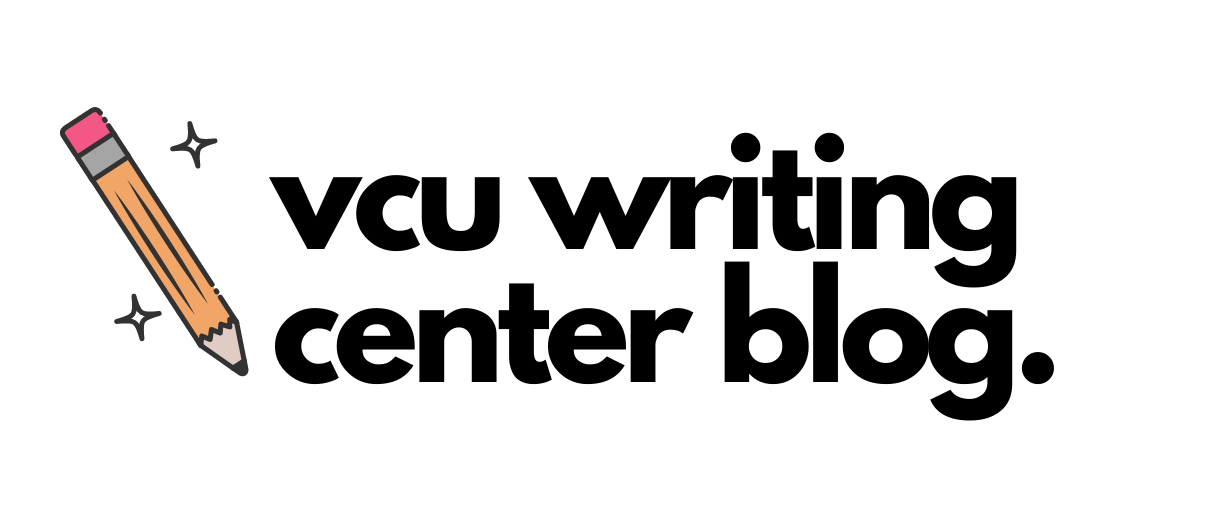…Which means what, exactly? You may have heard this phrase in a class, out in the wild world, or even from a consultant at our Writing Center. But what does it mean, and how can this practice be helpful to you?
First, let’s discuss your writing process. Simply put, this is the process that each individual writer goes through as they work on a project, start to finish; whether it’s an essay, a creative piece or journal entry, or even a discussion post, all writing becomes part of a larger process as it’s created. You might have even encountered Betty Flower’s version of this process, which breaks it down into four stages– madman (brain dumping), architect (outlining), carpenter (drafting), and judge (polishing). This, however, is a very simplified version of the writing process, and isn’t encompassing everything that goes into writing. Not only are there many other possible stages (peer review, for example, or researching, or rewriting, or —) but there are countless other little steps we as writers take to make ourselves ready for writing.
Being aware of all of these steps can be what really helps bring our writing process together cohesively. It can involve the things that make you work most effectively — maybe where you like to sit, what you use to make yourself comfortable, if/what background noise you like, etc. — as well as the unique stages that your writing goes through. The possibilities are endless, and paying attention to those details and being able to articulate what helps you create effectively is exceedingly helpful.
But have you ever taken the time to sit back and actually consider what all of these steps might be and how they all look together? “Visualizing” your writing process is essentially a practice in making yourself a map of said process. Where do you start? What key elements do you pass through as you work? Where do you finish? You can put this to paper in any way that suits you, but creating a physical image of this process can distill in your mind where to go next when you feel stuck. And don’t leave out the little things that make it unique to you. I, for example, know that to get actual writing done I need to find a quiet space to sit alone, and that I do my best proofreading when I can read sections aloud to catch errors. Also, my cup of tea is indispensable. Some people work much better in groups, or like to sit in the living room, or, or, or.
Exercise: Drawing it Out
Now that you’re familiar with the writing process, try to create your own and draw it out! There are no rules here— if you’re feeling artistic grab some colored pencils and crayons, or even just a notes app on your phone to get everything jotted down. Is the process linear? Cyclical? Branching? Do you repeat steps, skip some? Is that cup of coffee key? The most important thing to do is to take a second before you start and consider all the possibilities we talked about above. Remember, tailoring this exercise to your personal experiences and preferences will make it more beneficial! (Keep in mind that the writing process will look different for different types of writing, and that’s absolutely okay! A formal academic essay is going to go through a different process than a personal journal entry or creative work. For the sake of the exercise, consider your more complicated school assignments, since this is where many students find themselves struggling.)
Great work! Now you have a roadmap of your writing process. This is something you can come back to any time you have writer’s block or feel stuck on an assignment. Where are you now, and where do you go next? Put this self-knowledge to use. Happy writing!
About the Author
Jessica Corrado was born and raised in the Hudson Valley, NY, and is now exploring Richmond. She is an MFA in Creative Writing student at VCU and spends her free time (unsurprisingly) reading and writing, playing video games, or babysitting her many plants.
Photo by Patrick Perkins on Unsplash

